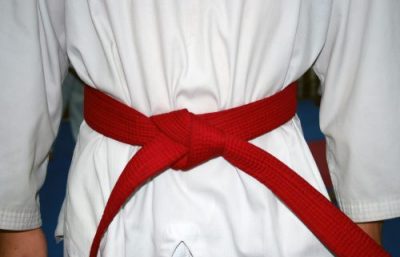Five Years Later….

“So… attack!” said the teacher.
“Um… ok,” said the students. “Which of us is attacking?”
“Both!”
“But um… who’s defending?”
“Both! Attack!”
Nervous eyes flew round the room. Did he mean… did he mean actually fight? Like… attack each other… and try to win?
“Keep it slow, keep it controlled, think about your feet, look after each other… and attack!” re-iterated the teacher as wide-eyed glances flicked between the assembled students.
“Ok…”
The three of us exchanged another round of ‘oh hell’ eyes. Two of us probably had to do something. No one really wanted to be first. Eventually partners were picked; fists raised; and very cautiously, we attacked.
Ten minutes later, I went to catch the bus home, and noticed that my breathing was still doing 100 miles an hour. This was from two things. Firstly, even going a minute with someone actually trying to hit you while you try to hit them back, is knackering. It’s just mentally and physically draining. Secondly, the adrenaline that had raced through my system as the realisation dawned that I really needed to deal with this whole ‘actually fighting’ thing, was still doing the whole dilated-blood vessel thing, and no amount of thinking calm thoughts about bunnies was gonna tune that hormonal response down.
This was the first time in five years of training that the senior grades in class had been actually invited to try and hit each other. Don’t get me wrong – for years we’ve hit each other, and dodged and blocked and jammed and passed and punched and feinted and tricked and – all sorts of things, really. But it’s always been within a controlled, drilled environment. Now for the very first time, our teachers were cautiously willing, for the last five minutes, to see if we could do this without the knowledge that you’d get two shots… then give two shots back… and see just how wrong it went.
It didn’t go that wrong, all things considered. Even with a cry of ‘attack!’ none of us were actually in a hurry to hurt each other. Victory was not about there being blood on the floor; it was about not losing control of hands, feet or technique, and being reduced to flailing puppies clawing at each other’s faces. That was the purpose of the exercise; that was what was being tested.
And the chief lesson I took from the experience? Is that five years is the minimum I would suggest before ever letting martial arts students actually fight.
This statement has various implications. Firstly it implies that most martial arts are pretty useless unless you can give up years of your life to train in them. A friend who does tai chi once said that, a bit like learning the violin, it takes 10 years minimum to get any good. While this statement holds a grain of truth, it also over-simplifies. After years of training, I just about held my own against someone else who also has years of training, and knows everything I do and how to read me, not that I was trying very hard to hide my intent. In real life, if a random dude decided to randomly attack me, I would be very, very unlucky indeed if they turned out to also be a telepathic black belt. I would also be focusing far more on running away than trading blows. The instincts that are drilled into hands and feet take time, yes; but they do get in and, more to the point, can help you learn the confidence to avoid a fight, or end it quickly. No one in their right mind should actually stand and fight another trained dude ever; it’d be dumb for all parties involved. More than anything I have learned that lesson: standing and fighting is dumb.
Of course, even when we were attacking each other without any sense of what the other guy might do next, we were doing a silly thing. Because while we weren’t exactly trading blows, neither was I kicking the other guy in the testicles or attempting to gouge their eyes out. It thus wasn’t a particularly realistic representation of what I’d actually do if threatened.
But again: that wasn’t the purpose of the exercise. Bleeding was not why we were there. Where shots did get through, and they rarely did, we pulled power. Where power was used, we moved off from it. We all went into this exercise with a cry of ‘I shall have a plan!’ and that plan probably didn’t survive more than a few seconds of contact with reality, but hey, at least there were some broad intents and our technique didn’t collapse too abominably under pressure, and that was the point. No one lost control.
There’s a moment, I think, around the middle grades of the syllabus where the realisation comes upon you that you’re getting to be… ok. Perhaps almost quite good, one day maybe. And you’re starting to generate power, and you can feel that, you can feel your body beginning to move behind blows and you really want to do well, so well, you want to show people what you’ve got you want to try so hard and….
… oh shit you’ve injured someone.
That point in the syllabus. That moment where your burgeoning self-confidence means you need to stop to think about why you’re using power, or why you might not use power at this point.
Doing drills it can sometimes be hard to remember the point of them. I do this drill in order to get my legs moving. I therefore do not need you to hit me as hard as you can while I do it, because by coming at me with loads of power I risk getting hurt because the thing I’m required to do with my legs is actually an inappropriate response to you attacking me in this manner. If you come at me with loads of power and intent to hurt me, the only way I feel safe is by destroying you utterly. I cannot feel safe by lightly brushing off your attack to one side, as might be required by the exercise we’re doing. I will only feel secure if your brutal assault is met by utter destruction, and if you’re not paying attention you may not even realise that the punch I pulled an inch from your nose might actually have inhibited you from carrying straight on with your attack. If you don’t pay attention to this, the odds of an injury just continue to rise.
And sometimes we forget this.
Sometimes it feels great to have that power, to be able to smash and to go really fast, because that’s awesome, right? That’s awesome mcfightyface, yes? And if you can’t handle my awesome mcfightyface then what are you doing trying to get your eighth grade?
To which the answer is: if your awesome mcfightyface is only going to stop trying to hit me when it becomes aware that it is actually being hit back very, very badly indeed; if your control isn’t good enough to be able to turn on a dime and make an attack, a block, or a block an attack – then someone will get hurt.
Drills embed different instincts in different parts of us. If you don’t understand the point of the drill, then you will never learn properly from it. After five years we attacked each other without any rituals or set patterns to hold us back, and no one was hurt because no one intended to hurt the other person.
Winning isn’t just about destroying your opponent. In a martial arts class, winning is learning. That is why you are there, rather than getting into random fights on the street. And more than anything, it takes time to learn the value of different skills, and to understand how things which are not mcfightyface power-crushing-death-strikes, are just as important as anything else.
We haven’t done much random fighting since. Under immense pressure, no one panicked, no one lost control, feet and hands stayed vaguely co-ordinated, movement kept on moving, no one flailed and no one was reduced to just trading blows; and that was a reward in itself well worth working for.





